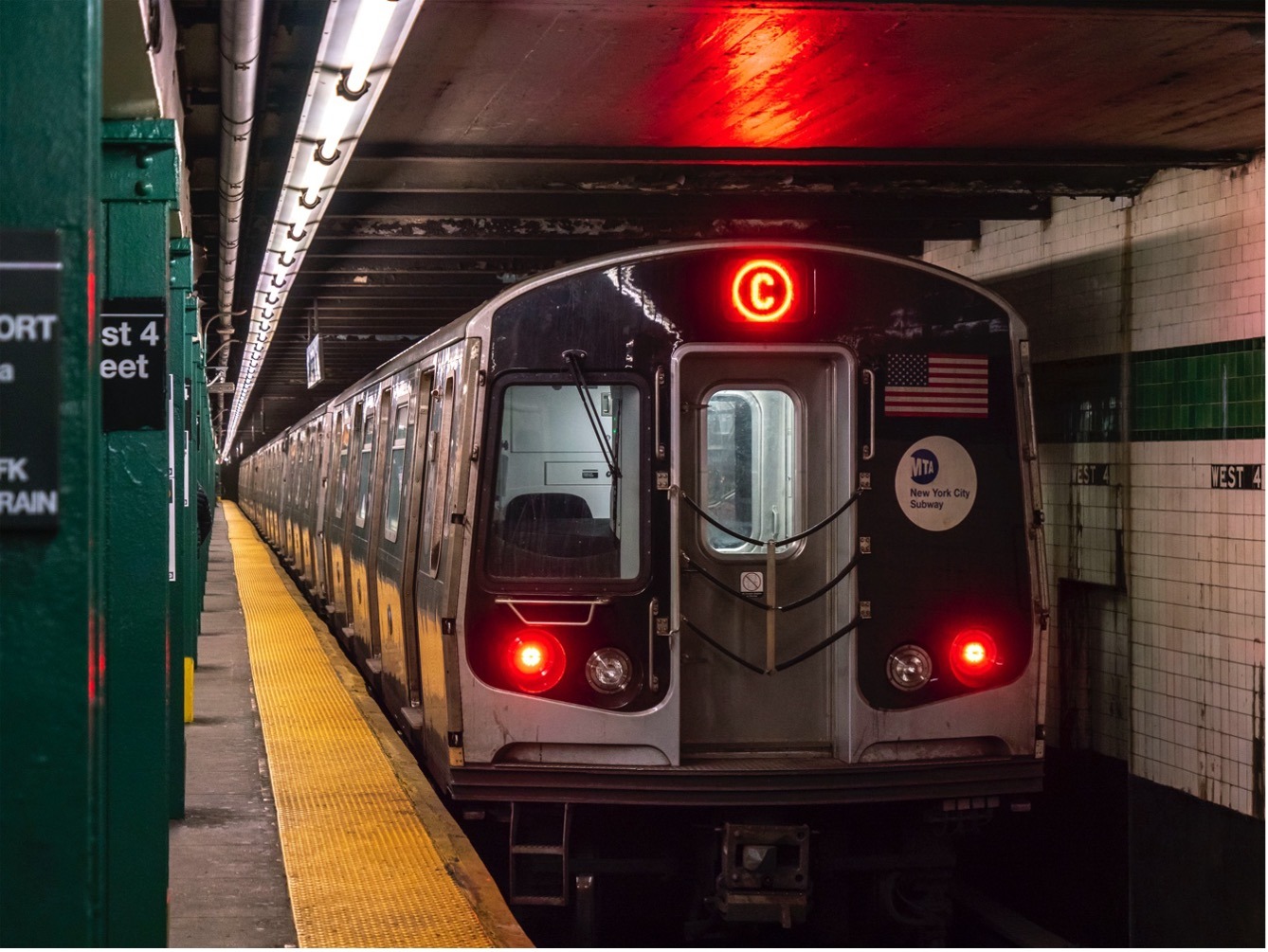
(Source)
New York City’s subway system has long been a lifeline for millions of residents and visitors. However, recent violent incidents have raised serious concerns about safety on the MTA. Over the holiday season, a 57-year-old woman was tragically burned to death while sleeping on the train, and on New Year’s Eve, a man was suddenly pushed onto the tracks by two strangers. These incidents have reignited public fear about subway crime, prompting Governor Kathy Hochul to announce a $77 million subway safety initiative in January 2025. The aim is to curb crime and restore public confidence in the transit system. However, questions remain: why has the MTA struggled to address safety concerns earlier, and will this new policy be effective in reducing subway crime?
Hochul’s Proposed Safety Plan
In mid-January, Governor Hochul introduced a $77 million subway safety plan featuring a range of measures designed to enhance safety on the MTA. The plan involves multiple components: (1) increased law enforcement presence in the subway, (2) installation of new protective platform barriers and LED lights, (3) modernized exit gates to reduce fare evasion, and (4) an expansion of mental health partnerships and resources throughout the city. This article will mainly focus on analyzing whether an increased police presence in the subway and an expansion of mental health partnerships and resources will be effective in deterring subway crime.
Is increased police presence in the subway diverting important public resources away from the city, and will it actually help deter crime?
According to Hochul’s proposed plan, approximately 750 NYPD officers will be stationed across 30 different subway stations and transit hubs that account for more than 50% of crime in the transit system, with an additional 300 officers stationed in the train cars themselves. In addition to their regularly scheduled hours, NYPD officers will work from 9pm to 5am for the next 6 months, and there will be a uniformed officer onboard every subway train in service during these hours. This part of the plan went into effect beginning on Monday, January 20th, 2025. According to Governor Hochul’s public announcement on January 16, 2025, the State and the City are expected to jointly cover the $154 million overall cost of deployment, with $77 million coming from the City of New York and $77 million from New York State. However, there are two major concerns regarding increased police presence, which have been voiced by both law enforcement officials and the general public.
First, despite Governor Hochul’s assurance in her January 16 announcement that the plan would not divert resources from local law enforcement, police officials have already reported staffing shortages at precincts. In November, New York City Council Member Gale Brewer requested additional officers for the 20th Precinct, but after 15 were assigned, they were quickly reassigned to subway patrol following Hochul’s announcement. Similarly, the Astoria precinct in Queens lost 16 officers to subway duty after the plan’s initiation.
On January 29, 2025, the Police Benevolent Association (PBA), a labor union representing active and retired NYPD officers, issued a statement to Fox 5 NY, arguing that New Yorkers “shouldn’t be forced to choose between safe neighborhoods and safe subways.” Critics and political opponents have also questioned the feasibility of maintaining constant police presence on every train, particularly given the NYPD’s existing staffing shortages and the concern that assigning officers to every subway car risks overstretching resources.
While the plan has only been in effect for two months, its sustainability over the next six months depends on a clear strategy for balancing resources between the subway and local precincts, particularly in high-crime areas. Currently, there appears to be no objective system for determining which neighborhoods can afford to reallocate officers to subway patrols and which require a stronger police presence. Establishing such a framework will be crucial for the plan’s long-term success.
Another key issue is whether increased police presence will actually reduce subway crime or simply enhance public perception of safety. To determine this, it is important to assess whether officers are actively engaging in crime prevention efforts, which can be analyzed by examining subway crime data since the plan’s implementation. Understanding the correlation between police deployment and crime rates will help clarify whether the plan is effectively deterring criminal activity or merely offering a sense of security without tangible results.
According to amNewYork, subway crime dropped approximately 36%, with 147 reported incidents compared to 231 the previous year. Notably, on January 5, 2025, New York City implemented congestion pricing, leading to a 13.1% increase in subway ridership between January 6 and 28, 2025, compared to the same period in 2024. Despite the increase in ridership, crime rates still declined, suggesting that increased police presence may have played a role in deterring crime. However, further data collection over the coming months is necessary to confirm this trend.
Beyond analyzing crime statistics, gathering qualitative data is crucial for understanding public perception of subway safety. Rider surveys and interviews can provide insight into whether commuters believe increased police patrols are effectively deterring crime. However, based on short news interviews, there seems to be mixed public sentiment regarding the effectiveness of the plan so far. Some riders have expressed skepticism, arguing that police presence does little to change the status quo, with one interviewee stating, “[The police] don’t do anything anyway.” Others have expressed reassurance, believing that having more officers on trains contributes to a safer environment.
A major challenge in assessing subway safety in the past has been the MTA’s reliance on flawed passenger surveys. These surveys often fail to capture the full extent of violent incidents or the agency’s ability to prevent them. Jesse Lang of StreetsBlog NYC highlighted this issue in her review of the MTA Customers Count Survey from June 2022. The survey asked riders to rate their satisfaction with conditions such as “Panhandling on board the trains” and “People behaving erratically on trains” using a rigid numerical scale from “Very Dissatisfied” to “Very Satisfied.” Lang criticized the survey’s structure, arguing that it forces respondents into oversimplified, context-free responses that do not adequately reflect deeper safety concerns.
To improve accuracy, future surveys should incorporate open-ended questions that allow riders to provide detailed feedback. Differentiating between various types of crimes—such as violent crime versus less severe crimes like petty theft—would also provide a clearer picture of the effectiveness of increased police patrols. Additionally, conducting in-depth interviews with frequent subway commuters could help capture nuanced perspectives that standardized surveys often overlook. Refining data collection methods will enable policymakers and transit officials to make more informed decisions about resource allocation and subway safety strategies as the plan progresses.
What will be the long-term effects of Hochul’s proposed expansion of mental health partnerships and resources throughout the city?
Although immediate crime prevention efforts, such as increased police presence, are important, ensuring long-term subway safety requires addressing underlying issues, including expanding mental health resources and providing greater support for unhoused individuals.
As part of her plan, Governor Hochul has proposed increasing the number of street medicine and street psychiatry providers statewide to deliver timely medical and psychiatric care. She also intends to collaborate with the NYC Department of Homeless Services to expand the 24/7 “Welcome Center” model near end-of-line stations, creating more spaces for unhoused individuals seeking assistance.
Currently, there is insufficient data to determine the effectiveness of these measures in reducing subway crime. However, Governor Hochul’s press office reports that her Safe Options Support (SOS) initiative, funded through the New York State Office of Mental Health, has successfully transitioned nearly 850 unhoused individuals into permanent housing. In the coming months, further analysis will be required to assess whether these mental health initiatives are effectively contributing to long-term crime prevention. However, their success will likely depend on sustained investment and coordination between law enforcement, mental health professionals, and social services to address the root causes of crime in the subway system.
Conclusion
Governor Hochul’s $77 million subway safety plan is an ambitious attempt to address long-standing concerns about crime in New York City’s transit system. While early data suggests a slight decline in subway crime, questions remain about the long-term sustainability and effectiveness of increased police presence, as well as the adequacy of mental health and social service initiatives. The success of this plan will ultimately depend on a balanced approach—one that not only ensures immediate crime deterrence but also invests in long-term solutions to address the root causes of crime in the MTA. As the plan unfolds, continued data collection, public feedback, and policy adjustments will be critical in determining whether this plan serves as a meaningful step forward or merely a short-term fix to deeper systemic issues.
Suggested Citation: Alice Kang, Governor Hochul’s $77M Subway Safety Plan: A Step Forward or a Short-Term Fix?, Cornell J.L. & Pub. Pol’y, The Issue Spotter, (Mar. 7, 2025), https://jlpp.org/governor-hochuls-77m-subway-safety-plan-a-step-forward-or-a-short-term-fix.


